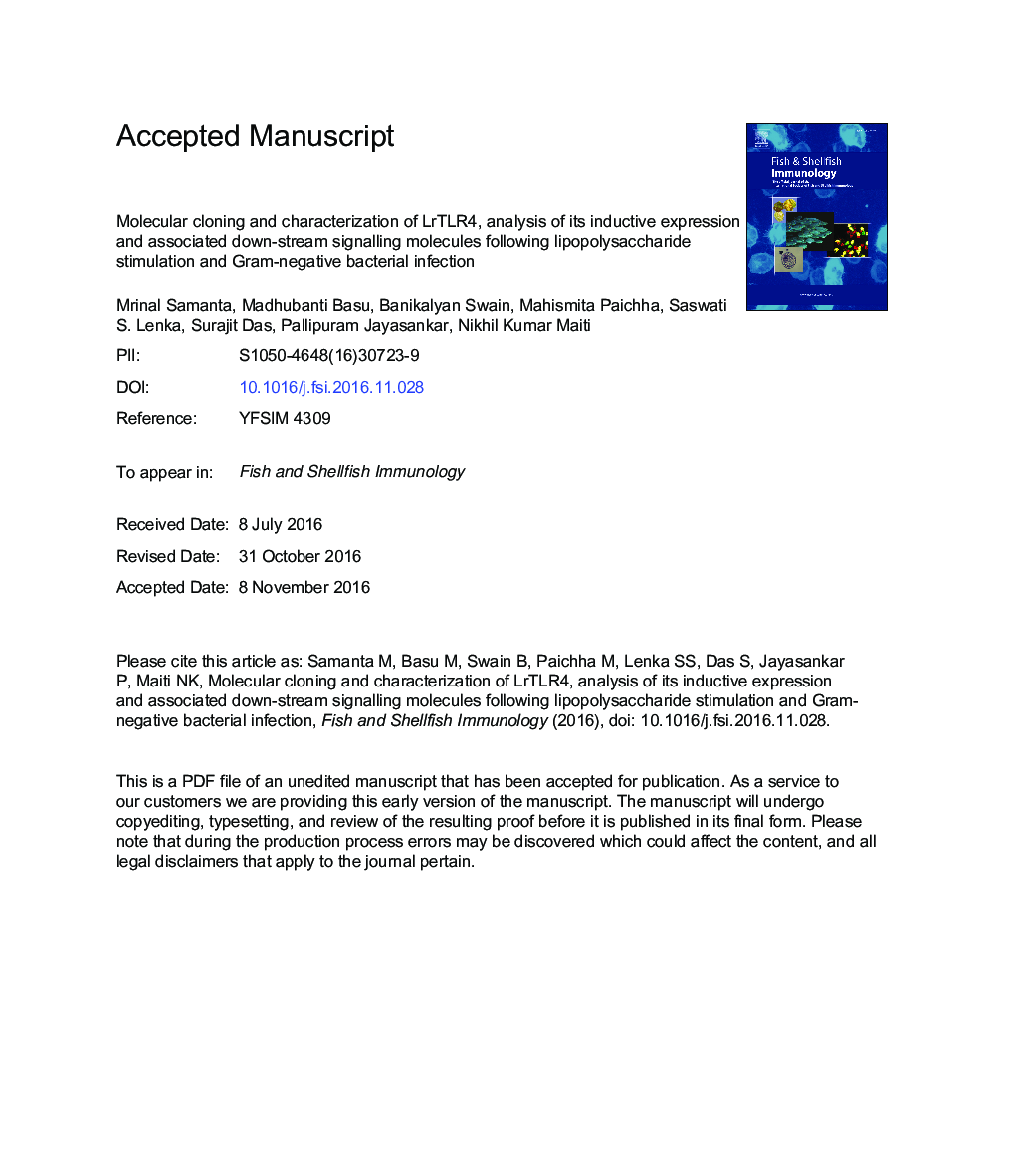| Article ID | Journal | Published Year | Pages | File Type |
|---|---|---|---|---|
| 5540974 | Fish & Shellfish Immunology | 2017 | 41 Pages |
Abstract
Toll-like receptors (TLRs) play key roles in innate immunity from lower to higher vertebrates. Among various TLR types, TLR4 was reported to recognize LPS in higher vertebrates resulting in the activation of down-stream signaling pathway. Except in some teleosts, function of TLR4 in most fish species including rohu (Labeo rohita) a commercially important fish species in the South-East Asian countries remained unknown. To investigate it, full-length cDNA of Labeo rohita TLR4 (LrTLR4) was cloned, and it consisted of 2729 bp, with a single ORF of 2469 bp encoding a polypeptide of 822 aa with a predicted molecular mass of 94.753Â kDa. Structurally, LrTLR4 consisted of 25 LRRs (leucine rich repeat regions), one TM (trans-membrane) domain and one TIR (Toll/interleukin-1 receptor) domain, and was similar to higher vertebrate's TLR4. Phylogenetically, LrTLR4 exhibited highest (85%) identity with the common carp TLR4b amino acids sequence, and formed a separate subgroup in the phylogenetic tree. LrTLR4 was widely expressed in all tested organs/tissues, and amidst the tissues highest expression was detected in blood and the lowest in eye. In response to LPS-stimulation, LrTLR4 was induced with the activation of MyD88-dependent and TRIF-dependent signaling pathway resulting in pro-inflammatory cytokines (interleukin 6 and 8) and type I IFN gene expression. Infection of rohu with a Gram-negative fish pathogen (Aeromonas hydrophila), also activated LrTLR4. Together, these findings suggest the important role of TLR4 in LPS sensing and augmentation of innate immunity against Gram-negative bacterial infection in fish.
Related Topics
Life Sciences
Agricultural and Biological Sciences
Aquatic Science
Authors
Mrinal Samanta, Madhubanti Basu, Banikalyan Swain, Mahismita Paichha, Saswati S. Lenka, Surajit Das, Pallipuram Jayasankar, Nikhil Kumar Maiti,
